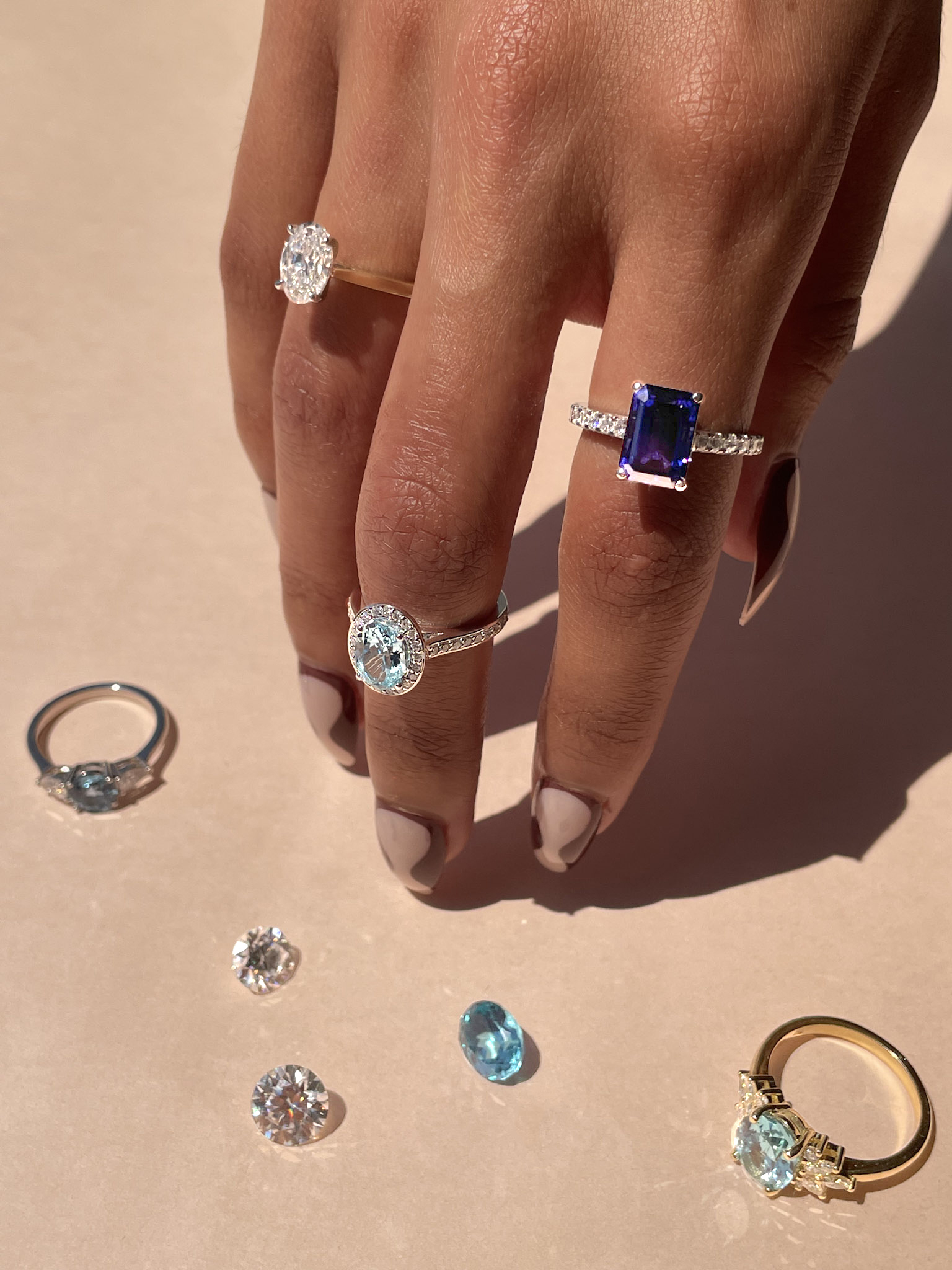
Lab Grown Diamonds vs Natural Diamonds: A Comprehensive Comparison
April 29, 2024In the realm of exquisite gemstones, diamonds have always held a special place. Their brilliance, durability, and timeless allure make them a symbol of luxury and love. However, the traditional perception of diamonds as rare, natural wonders has been challenged by the emergence of lab-grown diamonds. As technology advances, so does the ability to create diamonds in controlled environments. In this article Lab Grown Diamonds vs Natural, we delve deep into the intricacies of lab-grown diamonds versus natural diamonds, exploring their origins, characteristics, and implications for the jewelry industry.
Origins: Natural vs Lab-Grown Diamonds
Natural Diamonds: Natural diamonds are formed deep within the Earth’s mantle, where intense heat and pressure cause carbon atoms to crystallize over millions of years. These diamonds are then brought to the surface through volcanic eruptions or geological processes, where they are mined from kimberlite pipes or alluvial deposits. Each natural diamond is a unique product of geological forces, with distinct characteristics shaped by its environment of formation.
Lab-Grown Diamonds: On the other hand, lab-grown diamonds are created through advanced technological processes that replicate the conditions of diamond formation found in nature. These synthetic diamonds are produced in high-pressure, high-temperature (HPHT) or chemical vapor deposition (CVD) chambers, where carbon atoms are arranged into diamond structures over a matter of weeks. While the process may be accelerated, the resulting diamonds possess the same chemical and physical properties as natural diamonds.
Characteristics: Comparing Lab-Grown and Natural Diamonds
Composition: Both lab-grown and natural diamonds are composed of pure carbon arranged in a crystalline structure known as diamond cubic. This uniformity in composition ensures that lab-grown diamonds exhibit the same exceptional hardness (ranking 10 on the Mohs scale), brilliance, and refractive index as their natural counterparts.
Clarity and Color: In terms of clarity and color, both types of diamonds offer a wide range of options to suit different preferences and budgets. Natural diamonds may contain inclusions and impurities that affect their clarity and color, leading to a spectrum of grades ranging from flawless to included and colorless to fancy colored. Similarly, lab-grown diamonds can be produced with varying levels of clarity and color, allowing for customization to meet specific requirements.
Certification: To distinguish between lab grown diamonds and natural diamonds, certification by reputable gemological laboratories such as the Gemological Institute of America (GIA) or the International Gemological Institute (IGI) is essential. These certifications provide detailed information about the diamond’s origin, characteristics, and grading parameters, ensuring transparency and consumer confidence in the purchasing process.
Environmental Impact and Ethical Considerations
Environmental Impact: One of the key advantages of lab-grown diamonds is their significantly lower environmental impact compared to natural diamonds. Traditional diamond mining involves extensive land disturbance, water usage, and energy consumption, leading to habitat destruction, pollution, and carbon emissions. In contrast, lab-grown diamonds require minimal land and water resources and can be produced using renewable energy sources, making them a more sustainable choice for environmentally conscious consumers.
Ethical Considerations: Beyond environmental concerns, the ethical implications of diamond mining have drawn attention to issues such as labor practices, human rights abuses, and conflict financing in certain diamond-producing regions. By opting for lab-grown diamonds, consumers can support ethical and transparent supply chains, free from the ethical dilemmas associated with the traditional diamond industry.
Market Trends and Consumer Preferences
Shift in Consumer Preferences: In recent years, there has been a noticeable shift in consumer preferences towards lab-grown diamonds, driven by factors such as sustainability, ethical considerations, and affordability. Millennials and Gen Z consumers, in particular, are more inclined to choose lab-grown diamonds for engagement rings and fine jewelry, reflecting their values and desire for responsible consumption.
Market Growth: The growing demand for lab-grown diamonds has spurred significant growth in the market, with major jewelry retailers and designers incorporating lab-grown diamonds into their collections. This trend is expected to continue as awareness of the benefits of lab-grown diamonds increases and technology advances further, making them an increasingly competitive alternative to natural diamonds.
Conclusion: Making an Informed Choice
In conclusion, the debate between lab-grown diamonds and natural diamonds extends beyond mere aesthetics to encompass environmental, ethical, and economic considerations. While natural diamonds hold a timeless allure and cultural significance, lab-grown diamonds offer a sustainable, ethical, and customizable alternative for the modern consumer. Ultimately, the choice between lab-grown and natural diamonds depends on individual preferences, values, and priorities. By weighing the factors discussed in this article, consumers can make an informed decision that aligns with their principles and preferences.



:max_bytes(150000):strip_icc()/Web_1500-bri-lab-grown-diamonds-test-helzberg-hb1-jthompson-0577-8334ebf918474b3caac7697265ba6029.jpg)








